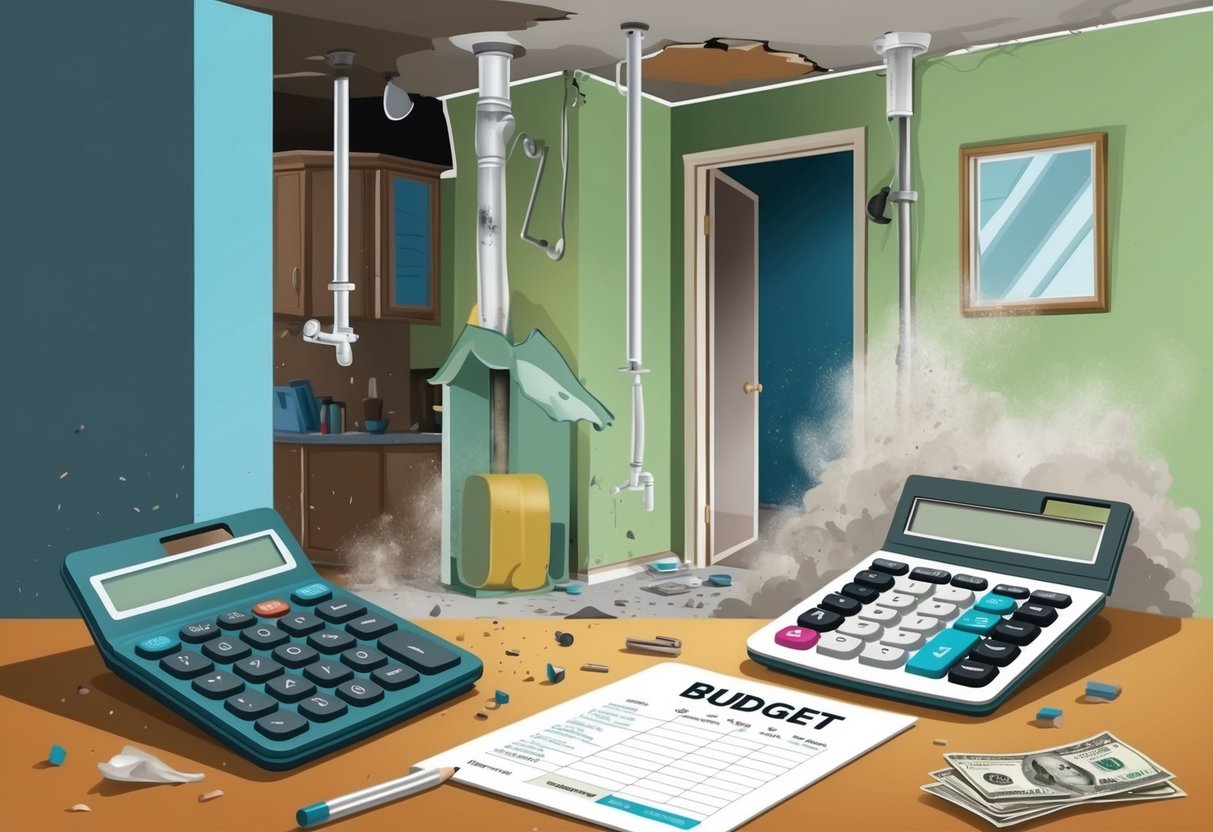
Many homeowners start a home remodel prepared for material and labor expenses, but are often surprised by hidden costs that quickly add up. Permit fees, temporary living expenses, design consultation fees, and unforeseen structural repairs are just a few examples that can blindside those who only budget for the basics.
Hidden costs can appear during any stage of the remodeling process. Issues like utility upgrades or complications discovered after demolition can significantly increase your overall project costs, as detailed in this guide on hidden costs of home remodeling.
Even waste removal, post-renovation cleaning, and change orders based on last-minute decisions often go overlooked, yet impact both timelines and budgets.
Essential Budgeting for Home Remodeling
Estimating the cost of home renovations requires careful consideration of materials, permits, labor, and potential surprises. Planning for unexpected expenses and aligning projects with personal priorities can prevent common budget problems.
How to Estimate Home Renovation Costs
Accurately calculating the cost of home renovations starts with identifying the scope of work. Major projects like kitchen remodels, bathroom overhauls, or structural changes will typically have higher material and labor expenses.
It is important to seek multiple contractor quotes and check itemized bids.
Key categories to include in your budget:
- Materials (flooring, fixtures, paint)
- Labor (contractors, specialists)
- Permit fees (city requirements)
- Design fees (architects, interior designers)
- Appliances (if included in the project)
Many homeowners overlook permitting and design costs, which can be significant depending on the local regulations. Begin by researching average costs in your area, then build a line-item budget to avoid surprises.
Permits, for example, are a commonly missed hidden cost and can be required for large and small jobs.
Budgeting for Unplanned Expenses
Unexpected problems like water damage, outdated wiring, or structural repairs often emerge once work begins. Experts recommend setting aside a budget buffer of 10-20% of the total estimated cost specifically for these issues.
This safety net reduces stress if costs rise unexpectedly.
Budgeting for unplanned expenses is not limited to construction issues. It should also cover:
- Change orders (if you or the contractor make adjustments to the plan)
- Waste removal (dumpster rentals or debris hauling)
- Temporary living costs if the home is uninhabitable during renovations
Setting up a dedicated reserve protects against delays and halts to work, which may arise from discovering hidden damage or needing extra time to secure permits. For more guidance, visit strategies for planning renovation costs.
Setting Priorities for Home Improvements
Homeowners often have a long wish list of home improvement projects, but not every upgrade has the same impact or urgency. Setting project priorities is essential for the overall success of a remodeling plan and helps manage the budget effectively.
Start by listing all desired renovations and then ranking them by necessity and value. Focus first on critical repairs and updates that impact safety or structural integrity.
Secondary priorities can include aesthetic upgrades that improve comfort or resale value. If budget constraints arise, postponing lower-priority projects prevents financial strain and maintains the integrity of the remodel.
Permits, Codes, and Local Regulations
Before starting any home remodeling project, homeowners must consider the expenses and requirements related to local permits and building codes. Failing to plan for these costs or missing key compliance rules can lead to unexpected delays, added fees, or rework.
Permit Fees and Requirements
Permit fees vary widely based on location, project size, and complexity. For extensive renovations or additions, fees often range from $750 up to $2,000 or more, while new construction can push costs even higher.
In some regions, charges may reach up to several thousand dollars depending on the project scope. Specific permits are required for many types of work, including electrical, plumbing, and mechanical services.
These individual permit costs can be as low as $50, but several hundred dollars is not uncommon. If multiple permits are required, these costs quickly add up.
Contractors generally handle permit applications, but homeowners should confirm if this service is included in the main contract. Budgeting for permit fees up front can help prevent project delays and potential penalties for unapproved work.
Code Violations and Compliance Costs
Home renovations must comply with local building codes, safety standards, and zoning regulations. If existing conditions in the home do not meet current codes, upgrades can become a significant hidden cost.
Common code-driven expenses include upgrading electrical wiring, replacing outdated plumbing, or reinforcing structural elements. Inspections by municipal officials often identify issues missed at the planning stage.
If a project fails inspection, corrections must be made before additional work continues. These corrective measures may include both labor and material costs, and addressing code violations can significantly raise the total expense.
Staying informed on applicable codes and consulting with experienced contractors reduces the risk of overlooked compliance issues. Services development professionals can evaluate plans before work begins to help ensure the remodel meets all state and local requirements.
More details on avoiding unexpected costs from failing inspections and other hidden pitfalls are available at GreatBuildz’s guide on remodeling costs.